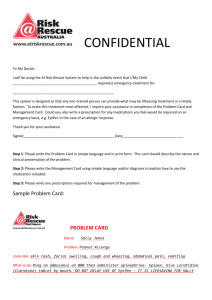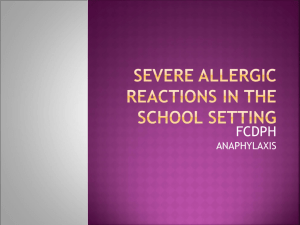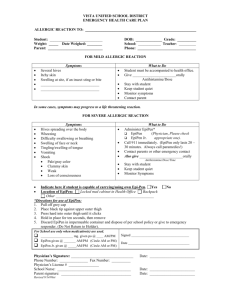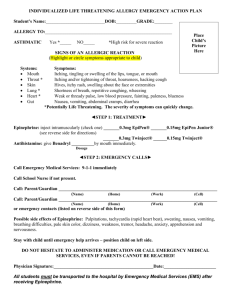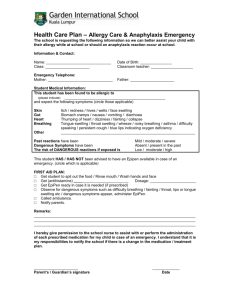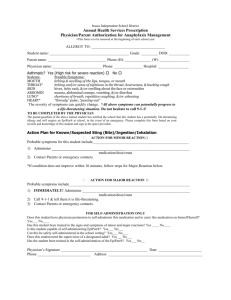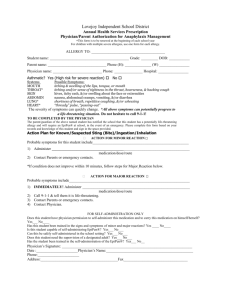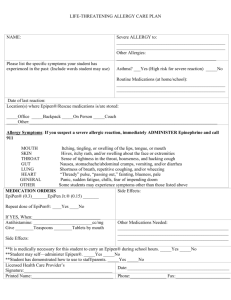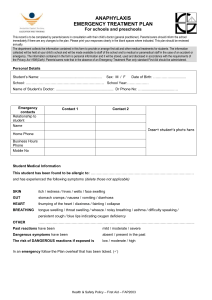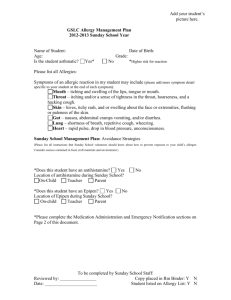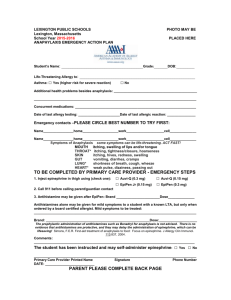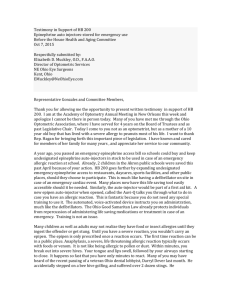ALLERGY EMERGENCY ACTION PLAN
advertisement
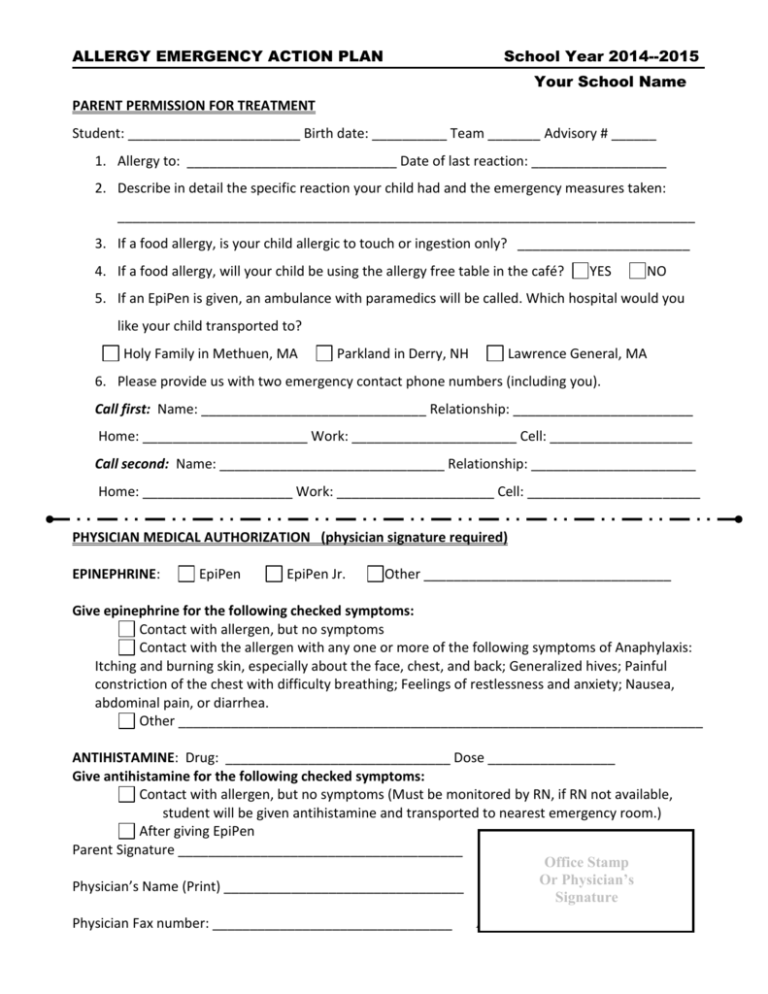
ALLERGY EMERGENCY ACTION PLAN School Year 2014--2015 Your School Name PARENT PERMISSION FOR TREATMENT Student: _______________________ Birth date: __________ Team _______ Advisory # ______ 1. Allergy to: ____________________________ Date of last reaction: __________________ 2. Describe in detail the specific reaction your child had and the emergency measures taken: _____________________________________________________________________________ 3. If a food allergy, is your child allergic to touch or ingestion only? _______________________ 4. If a food allergy, will your child be using the allergy free table in the café? YES NO 5. If an EpiPen is given, an ambulance with paramedics will be called. Which hospital would you like your child transported to? Holy Family in Methuen, MA Parkland in Derry, NH Lawrence General, MA 6. Please provide us with two emergency contact phone numbers (including you). Call first: Name: ______________________________ Relationship: ________________________ Home: ______________________ Work: ______________________ Cell: ___________________ Call second: Name: ______________________________ Relationship: ______________________ Home: ____________________ Work: _____________________ Cell: _______________________ PHYSICIAN MEDICAL AUTHORIZATION (physician signature required) EPINEPHRINE: EpiPen EpiPen Jr. Other _________________________________ Give epinephrine for the following checked symptoms: Contact with allergen, but no symptoms Contact with the allergen with any one or more of the following symptoms of Anaphylaxis: Itching and burning skin, especially about the face, chest, and back; Generalized hives; Painful constriction of the chest with difficulty breathing; Feelings of restlessness and anxiety; Nausea, abdominal pain, or diarrhea. Other ______________________________________________________________________ ANTIHISTAMINE: Drug: ______________________________ Dose _________________ Give antihistamine for the following checked symptoms: Contact with allergen, but no symptoms (Must be monitored by RN, if RN not available, student will be given antihistamine and transported to nearest emergency room.) After giving EpiPen Parent Signature ______________________________________ Office Stamp Or Physician’s Physician’s Name (Print) ________________________________ Signature Physician Fax number: ________________________________ Physician Signature or Office Signs and Symptoms of Anaphylactic Shock Anaphylactic shock may affect different body systems. Symptoms of anaphylactic shock.1 Itching and burning skin, especially about the face, chest, and back. Painful constriction of the chest with difficulty breathing. Dizziness. Feelings of restlessness and anxiety. Nausea, abdominal pain, or diarrhea. Headache. Temporary loss of consciousness. In the most severe cases of anaphylaxis the victim may stop breathing. Even though some of the signs and symptoms listed above seem minor, “anaphylactic shock must be considered life threatening whenever it is encountered.”2 There is no way that one can predict what will happen to a victim suffering anaphylaxis. It is possible that a victim showing signs of a mild reaction can suffer respiratory arrest in a matter of only a few minutes. Procedure to use EpiPen: **Have another staff member call 911 immediately, and then emergency contacts on other side of this sheet. Using an EpiPen always constitutes a medical emergency. Tell the operator that an EpiPen was given and that a second dose may be needed.** 1. Remove EpiPen from outer container. 2. Holding the EpiPen with your dominant hand, form fist around the unit with the black tip pointing downward. 3. With your other hand, remove the blue cap. The EpiPen is now ready for use. 4. Hold the orange tip NEAR the site of injection to the outer thigh, at right angle to leg. Always apply to thigh. 5. Press hard into thigh until the Auto-Injection mechanism functions, and hold in place several seconds. 6. Remove the unit and replace it in the outer container for transport. 7. Massage the injection area for ten (10) seconds. 8. If student is stung by an insect, remove the insect’s stinger by scraping with a credit or other type of card. Do not pinch, squeeze, or push it deeper into the skin. Apply ice pack to the area stung. Keep student warm and avoid exertion. 9. ALWAYS transfer for medical evaluation. 1 Harvey D. Grant, Robert H. Murray Jr., & J. David Bergeron, Brady Emergency Care 5th Edition ( Englewood Cliffs, New Jersey: Prentice Hall, 1990), 208. 2 Ibid., 207
